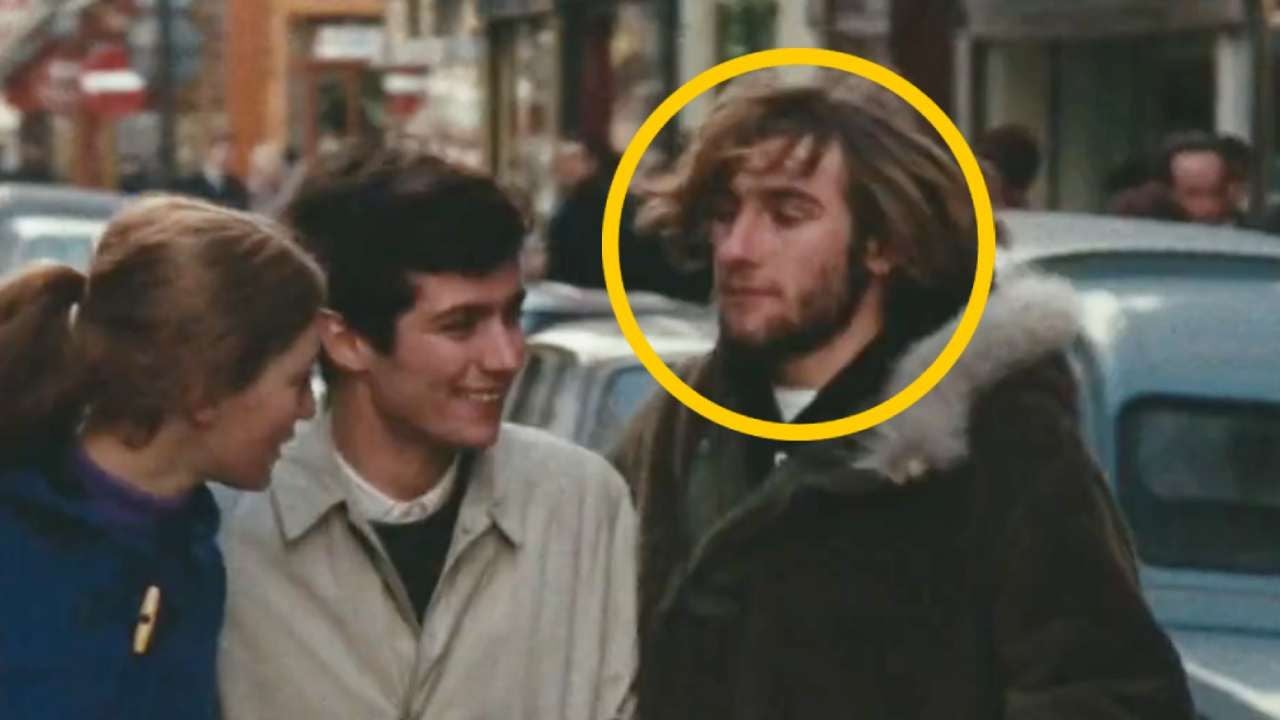The book explores the lives of African women who achieved (relative) economic success, took over the leadership of their communities in Minas Gerais in the 18th century, and also ended up being the subject of witch-hunts undertaken by the Portuguese state.
Among the stories of the black population in Brazil that managed to survive the erasure process, there are episodes that still remain in the shadow of ignorance. A book proposes to investigate one of them: the lives of African women who achieved (relative) economic success, took the leadership of their communities in Minas Gerais in the 18th century and also ended up the target of a literal witch hunt undertaken by the state Portuguese .
Vodun Priestesses: African Women and the Inquisition in Minas Gerais (Chão Editora, 2023), by historians Aldair Rodrigues and Moacir Rodrigo de Castro Maia, brings together the complaints of the Tribunal of the Inquisition of Lisbon which aimed to punish religious manifestations outside the Catholic faith.
The duo’s work also reveals a facet of Africa that has set foot in Brazil, distinct from the tradition of the Orixás, founded by the Yoruba and more documented and widespread throughout history.
It is about the culture and faith of the original population of the region known as Costa da Mina (currently territories of Ghana, Togo, Benin and part of Nigeria) and devotees of the Vodum religion.
The term has a history and a much broader meaning than the one that has been crystallized in the popular imagination by the nailed dolls of Haitian voodoo (which also has roots in the traditions of the Costa da Mina).
“It’s a very old term for these peoples, particularly from West Africa, used to designate their deities,” says Maia.
“Religion had very open, unifying characteristics. There were cults belonging to the general population, for example vodun associated with trees or snakes and, at the same time, there were private cults belonging to family, clan, lineage” .
Rodrigues states that “Vodum is a belief system that organizes the relationship between the world of the living and the invisible world of their ancestors. With religious racism, all of this was read as devil worship.”
“But, indeed, you have the material dimension of practices involving the making of sacred objects, activated through rituals that lead to power for both malevolent and beneficial practices, protection, etc.”
This system, which governed an important part of life in that part of West Africa, collapses when these people are uprooted from their lands to embark on a brutal – and often deadly – journey across the Atlantic Ocean.
“These people are taken out of their community and their relationship to the world of their ancestors. It is a violence that goes beyond physical violence, because you are removed from your kinship networks, something fundamental to help someone integrate into society,” says Rodrigues, a professor at Unicamp.
Those who survive the ship journey in subhuman conditions try to adjust to life in colonial Brazil as best they can. One of them is to recover elements from their homelands along with other enslaved people.
Spaces to reconnect with the roots

In Minas Gerais, a general language of the “Mina Nation” was created, as the different languages belonged to the same linguistic branch. There were various levels of mutual understanding, but communication was facilitated.
Over time, even physical spaces are organized to revive the traditions of the Vodum religion that were so prominent in their genealogies.
Maia, also a researcher at the Federal University of Minas Gerais (UFMG), says documents on a case that occurred in Paracatu, in the interior of Minas Gerais, indicate a meeting of the “so-called specific group of the Vodum area, who loves what the authorities call ‘listening to the God of his land’ So there is a need, after that terror that was migration, to reconnect with his cultural universe”.
The document describes a cult in an area further from Paracatu, installed in the place of residence of vodunsi (priestess) Josefa Maria, formed by a majority of women.
“And they had a kitchen in the same house, where the witness did not enter or see what was inside, but what she saw came out of there a black blanket named Josefa Maria wrapped in some old chintz and [entrava] in the dance [em que proferia] some words that our holy faith found and others that it did not understand and in the same dance she pretended to be dead, falling to the ground, and others lifted her up and carried her to that little room”, recalls the document.
The demonstration at Josefa’s house took place regularly, always on Saturday, bringing together freedmen and slaves.
“There’s a stereotype that every black man, every black woman at that time was a slave. But there were free black women, they’re the ones who predominate in the manumissions. It’s a precarious freedom, but the book is about a black woman’s freedom in slavery,” Rodrigues says.
The Unicamp professor explains that this is due, in the case of Minas Gerais, to the presence of black women in the food trade, who opened sales and consequently had more traffic to negotiate the obtaining of tampering.
“Men stayed longer in the mines, in the fields, with less possibility of accumulating money”.
Thus women constituted their own home and a possible place to hold meetings.
“They occupy a greater space of autonomy, albeit with all the limitations and difficulties. And, contrary to the paternalistic society, they obtain an enlarged religious role in the Vodum cult that has established itself in Brazil,” says Maia.
According to Rodrigues, “this freedom is experienced in a contradictory way because these women acquire slaves, often from the same region they came from. In Brazil at the time social position, prestige were measured in relation to slavery because it was a slave society ” .

The repressive apparatus
With the Portuguese monarchy based on the Catholic religion, political stability is also directly based on the unity of faith. The Inquisition is a court specialized in overseeing the purity of the faith and in persecuting those who deviate from it.
“Anything related to other religious cultural manifestations will be persecuted. And a big element to articulate this persecution is the belief that followers of religions of African origin are worshiping the devil. Having an association of Vodun with the devil, this legitimizes violence ” says Rodrigues.
“There is another factor that, in these cults, leaders are formed who sometimes plan rebellions and escapes. So, for the social control of this population, it was urgent to pursue and eliminate these spaces.”
The Inquisition also shaped the structures of social ascension of the time. Applying as an agent in Minas Gerais did not bring much remuneration, but presenting oneself as a defender of the purity of the Catholic faith meant obtaining great prestige in society.
“If you join the Inquisition, you have public proof that you have gone through a rigorous process of investigation into the purity of your blood,” Rodrigues says.
The handicraft was forbidden for the descendants of Jews, Muslims and slaves.

“So all the elements come together to defend this Catholic ideology. Economic power is not enough at that time. You have to have social status.”
Despite the stigma and persecution of vodum, many whites sought African cults for relief from moments of despair and the search for a cure for disease.
But the possibility of being involved in a lawsuit against the Vodun demonstrations meant an incentive to hand over priestesses and devotees to the authorities.
“The Inquisition distributes public notices in Brazil to collect denunciations, read at the end of the masses. One of the elements that we find in these public notices is that if people do not denounce what they know, they are automatically excommunicated,” explains Rodrigues.
“And, if you report it, the sentence is often commuted. White people, in a moment of desperation, go to services, feel welcomed, solve their problem and then feel guilty because they are Catholic. And then, to ease the conscience, denounce the Africans with whom they live”.
The compiled cases Vodun Priestesses: African Women and the Inquisition in Minas Gerais, despite persecution and arrests, they have not been sentenced. For some reason, they went unanswered.
According to Maia, “one could think that the fact that they did not lead to a lawsuit and there was no definitive conviction indicates a lesser significance of these cases. When we see these social structures taking action to collect information and complaints against these people, mainly Africans, we see the terror that has been imposed on those places.”
More than 250 years later, the persecution of African-based religions continues in Brazil. Rodrigues says it is a representation of an enduring racism, which only changes over time and space.
“I would say that the main element of permanence is the association of African entities with the devil. It is this that causes fear and elicits violence. Fear of what is unknown, fear of what is different and, at the same time, the construction of a Christian religious identity. It is built in relation to the other. And the other, in this case, is the African”.
Source: Terra
Rose James is a Gossipify movie and series reviewer known for her in-depth analysis and unique perspective on the latest releases. With a background in film studies, she provides engaging and informative reviews, and keeps readers up to date with industry trends and emerging talents.






